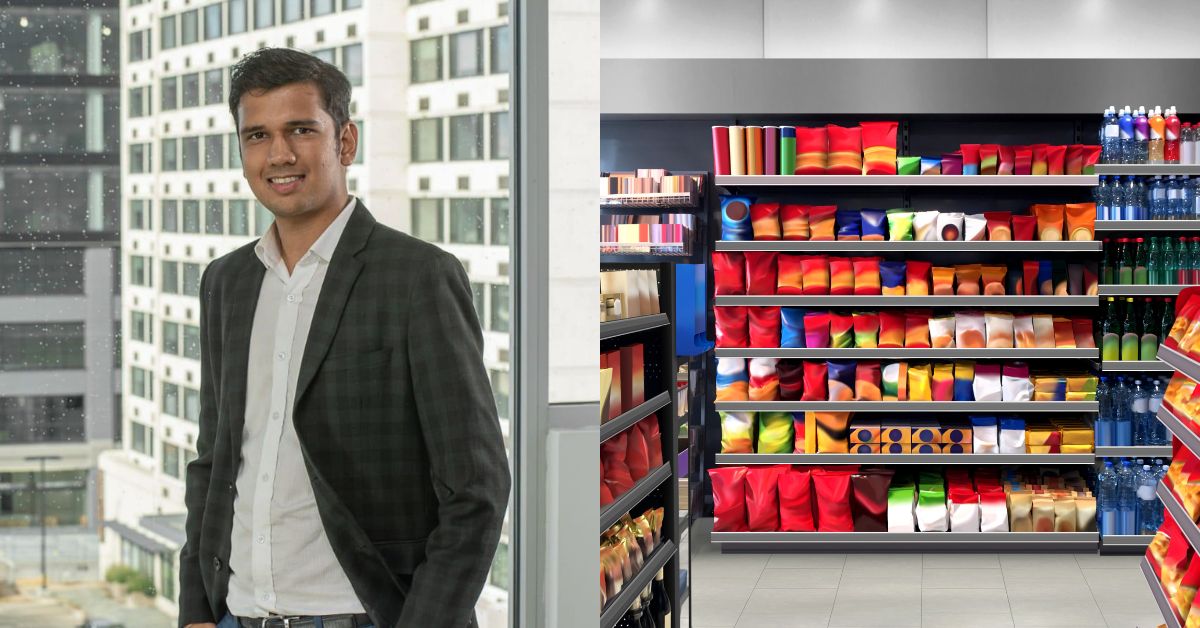6 Ways to Read Food Labels: Health Coach Shares Unseen Risks in Everyday Food
Revant Himatsingka, aka foodpharmer on Instagram, terms reading food labels the most important life skill. His aim is to expose “false marketing” by FMCGs and educate people on what they are truly consuming.

Remember those small discs called ‘tazos’ we found inside chips packets in the 2000s?
Part of a worldwide promotional campaign created first by the brand Frito-Lay in 1994, they were such a rage in schools as well. Everyone would discuss, swap, share, gloat about the latest Tazos they had managed to collect with their friends.
Did you ever think of how many chips you consumed in the run up to building your Tazo collection?
“I bought several packets of chips to build my Tazo collection as a child. I would just eat a few chips and give the rest of the packet to my parents. This led to them unwittingly consuming a lot of junk food,” Revant Himatsingka, a health coach and content creator, recalls in conversation The Better India.
The ill effects of mindlessly consuming excess junk food were lost on a young Revant, but as he grew older, he started noticing that something was amiss.

“Almost 60-70% of what we eat is packaged, and what we eat has a direct impact on our health. After I started reading food labels, I realised how companies mislead us using catchy taglines and calling their food ‘healthy’. Most packaged food is lying to us. Learning to read beyond these taglines was very consequential,” adds the 31-year-old.
In its report ‘The State of the World’s Children’ released in 2019, UNICEF highlights a glaring problem — too many school-going adolescents are consuming highly processed foods, and 42% drink carbonated soft drinks at least once a day, while 46% eat fast food at least once a week. “Millions of children are eating too little of what they need, and millions are eating too much of what they don’t need,” reads the report.
Tackling this alarming problem has been a mission for Revant since April 2023, when he began educating lakhs on health claims made by FMCG companies on their packaging, and exposing how unhealthy popular food items can be.
This endeavour was sparked earlier this year, when Revant went viral for a video exposing a popular children’s drink for its excess sugar content. Shared extensively across social media, the video would also result in a legal notice, due to which he had to take the video down. Regardless, the video made him an overnight sensation and, subsequently, a well known name in busting myths surrounding unbacked health claims.
How healthy are your favourite food items?
Before embarking on this journey, Revant had a cushy job that paid him crores every year, he recalls. But the experiences he had had growing up pushed him to quit his job early this year.
As we discuss this turn of events, he recounts an anecdote — his grandparents would always start their day with a steaming cup of chai and two biscuits.
“But no one thinks about the ingredients present in these biscuits, or how much sugar or maida they might contain. Most biscuits in the market also have palm oil. It’s not the once-in-a-week chocolate that’s making you unhealthy, but actually are the daily biscuits,” he notes.
The cognisance of this undetected evil encouraged Revant to pursue a course in nutrition from the Institute of Integrative Nutrition alongside his management degree from the NYU Stern School of Business. “I was solving business problems as a management consultant, [but] I wanted to use the same skills to solve one of the biggest problems in life — health. The blatant lies used by food companies in their packaging really bothers me,” he says.
It was also this passion that led him to create the infamous viral video in April this year.
“The label on that drink says that you get stronger bones and muscles. The reason I chose to make a video on this drink is because people feel this is healthy. They have no qualms about giving this twice a day to their children — that’s 14 times a week. People think aerated drinks like coke are unhealthy, which we may have only once a week. But the former has a direct impact on our health,” he adds.
On his Instagram @foodpharmer, Revant educates about 500,000 of his followers on how they can make healthier choices. These include videos decoding labels of popular packaged noodles, drinks, biscuits, sauces and more, as well as helping people decide which bread is better for them, which drink they can choose, etc. He is also promoting small businesses that are “relatively healthier” than the bigger brands. His goal is to help people choose better, he says.
Remember this next time you’re at the supermarket
While Revant agrees that it’s not possible to live without consuming packaged food, he just wants people to make informed choices. “There are two types of junk food — one is junk food that pretends to be healthy food, and the second is just junk food. My problem is with the former, which I want to expose,” he emphasises.
So how can we make good everyday choices when we pick our food? For this, Revant shares six tips with us:
- Ingredients are listed in order of their weight:
“The first ingredient is the one the packet contains the most. So if you’re buying biscuits, the first three ingredients usually will be maida (refined wheat flour), palm oil and sugar” says Revant.
- Buy items that have less than five ingredients:
“Try to stay away from products that have more than five ingredients. As the ingredient list increases, it’s inversely proportional to the nutritional benefits.”
- Avoid products that have complicated ingredients:
“If you can’t recognise or pronounce ingredients in a product, it’s not good for you. Buy the product in which you can understand the ingredient, like something that says dates, peanuts, milk, etc. If something has ingredients like maltodextrin, anti-caking agent, technical chemicals, stay away from it,” he adds.
- Buy items that don’t list sugar in the first 5-6 ingredients:
“Steer clear of products that have sugar listed first or second. Those products are basically just sugar.”
- Go for the slightly healthier options:
“The whole idea is to make healthier choices. Instead of going for a maida biscuit, go for an atta (whole wheat flour) biscuit.”
- The best food for you is one that doesn’t have a label:
“Ultimately, the healthiest foods are the ones without any labels, fruits and vegetables. If you must buy other products, go for simple products that have ingredients you know. For example, if you’re buying peanut butter, go for products which just have peanuts,” explains Revant.
In his quest to make the next generation healthier and wiser about their food choices, Revant dreams of a day when every child is taught how to read food labels. He now goes to schools and colleges to teach students this skill as well. Here, he often finds that children ask interesting and intelligent questions.
“They question why the front of the packets say something that the product clearly does not do. They want to know why their favourite celebrity is endorsing a product which is unhealthy. I am hopeful that this will lead to better choices,” smiles Revant. If you found our stories insightful, informative, or even just enjoyable, we invite you to consider making a voluntary payment to support the work we do at The Better India. Your contribution helps us continue producing quality content that educates, inspires, and drives positive change. Choose one of the payment options below for your contribution- By paying for the stories you value, you directly contribute to sustaining our efforts focused on making a difference in the world. Together, let’s ensure that impactful stories continue to be told and shared, enriching lives and communities alike. Thank you for your support. Here are some frequently asked questions you might find helpful to know why you are contributing?

“If children are taught how to read a food label and understand the consequences, it will bring about a massive change. Companies will be forced to market themselves honestly, and this will change the game.”
Edited by Padmashree Pande and Divya Sethu
Sources
UNICEF
This story made me
- 97
- 121
- 89
- 167












